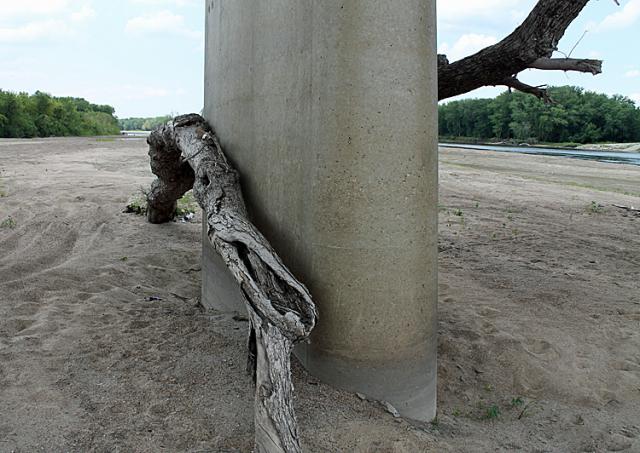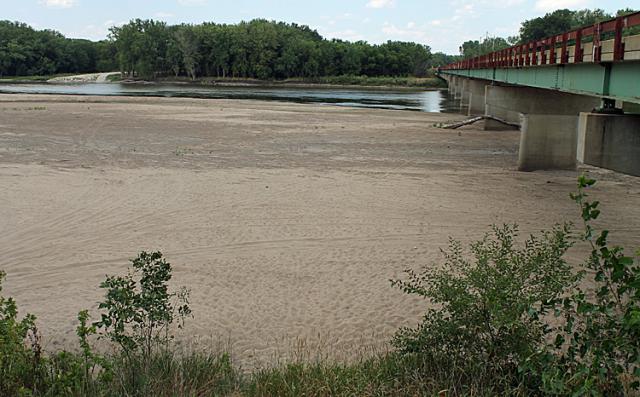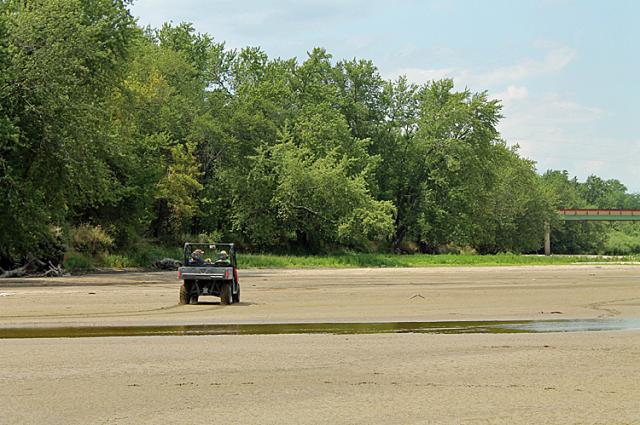While many people are still keenly aware of the 24.7 foot record flood level set in June of 2008, many other river watchers have not seen water this low on the Cedar River for years.
The official reading from the National Weather Service/U.S. Geological Survey river gauge, the Cedar River at Vinton was down to 2.04 feet at 3:15 p.m. Monday. The low water level is keeping virtually all boats out of the water; some people even rode a four-wheeler halfway across the Cedar on dry sand near the Mount Auburn boat ramp.
Benton County Emergency Management Agency Director Scott Hansen said he was recently near Evansdale and saw some people crossing the river on foot. Hansen said that it may be possible for some people to cross the Cedar River on foot in some areas of the river near Vinton. But Hansen, whose job description includes protecting citizens from the river water during flood season, says crossing the river on foot could be dangerous. There are many drop-offs where the river gets suddenly several feet deeper, said Hansen.
"This is not a nice river to walk across," he said.
Fishing challenges
Benton County Conservation Board Naturalist Karen Phelps offered some observations on the impact of the low water on fishing in Iowa rivers.
"The low water levels, combined with the extremely high temperatures are having an affect on the fish in the lakes, streams and ponds,' said Phelps. "Even though fisherman report they are still catching fish, they are having to search out the deep pools and shady areas, as that is where the fish are concentrating. With high temperatures and low water levels, there is often times a depletion in oxygen. The warmer the water, the less dissolved oxygen it can hold, often times resulting in fish kills." Phelps also offered some other information about the impact of the drought: Evaporation of the water also allows for high concentrations of waste metabolites in water like ammonia, carbon dioxide, and nitrites. Increased concentrations can stress or kill fish outright. Though most fish have gone through the spawning period, low water levels result in loss of spawning areas, thus reducing the population. Many fisherman are stating that the low water levels are making it difficult to access the water with their boats and low levels are making waters difficult to navigate safely. On the plus side, low water levels are allowing many people the opportunity to get out and work on boat ramps, docks, and fish habitat. The low levels are also allowing for renewed plant growth on exposed shoreline, in turn creating vegetative habitat for not only fish, but a large number of waterfowl once the water level increases. The low water levels, combined with the extreme heat, are not only stressors on the fish, but all aquatic mammals, and shorebirds, as well as waterfowl. Habitat is depleted and this is always a cause for concern if the period lasts for too long. Check out the Iowa DNR website for a weekly fishing report from across the state.





Comments
Submit a CommentPlease refresh the page to leave Comment.
Still seeing this message? Press Ctrl + F5 to do a "Hard Refresh".